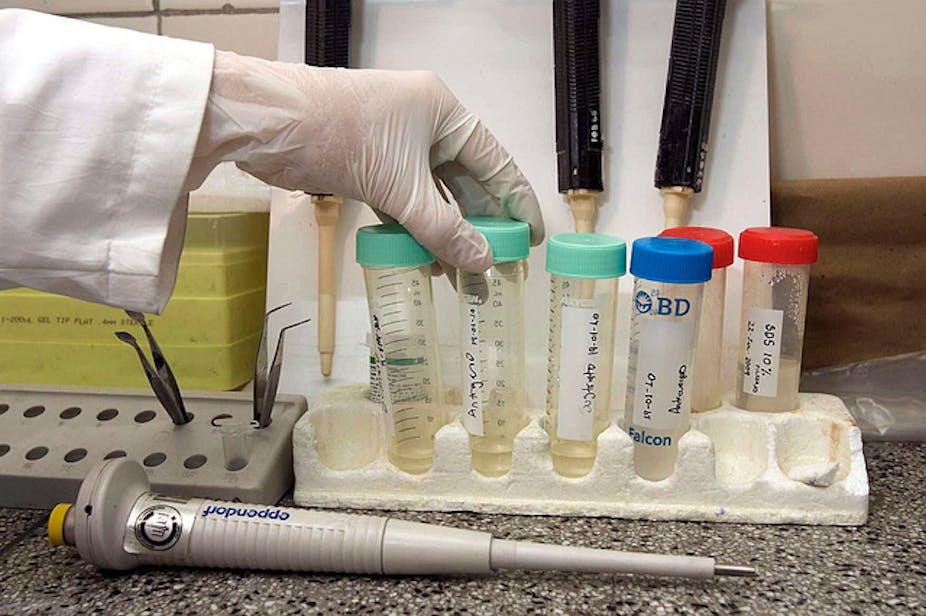Australia’s mortality rate for all cancers has dropped 28% in 20 years, new figures show, but progress has been slow in the fight against thyroid and pancreatic cancer, while the death rate from liver cancer has skyrocketed.
Cancer Council NSW released the data today, saying the results highlighted overall successes in cancer research but also the struggle to fund and execute research on ‘forgotten cancers’ that must share the limelight with more high profile diseases, such as breast cancer.
The data is drawn from Cancer Council’s State of Cancer Control report, to be released in full next month.
The researchers compared the mortality rate from various cancers in 1987 with the expected cancer death rate in 2007 and the actual cancer death rate in 2007.
The figured show that between 1987 and 2007:
- The mortality rate for all cancers dropped by 7287 people, or 28%
- The mortality rate for pancreatic and thyroid cancers dropped by just 6%
- The mortality rate for liver cancer rose 70%
- The mortality rate for oesophagus cancer dropped by just 9%
“The big picture good news is that there are almost 8000 people alive and walking around today who, if this was 1987, would be dead from cancer,” said Associate Professor Freddy Sitas, author of the report and Director of Cancer Council NSW’s Cancer Research Division.
“Then you have these other cancers, like thyroid and pancreatic, where we haven’t seen much change at all or the mortality rate has gone up, like liver cancer.”
The slow rate of progress in some cancers was partly explained by a lack of research, he said.
For pancreatic cancer, for example, diagnosis is usually associated with really serious illness, leaving a small pool of patients willing to participate in research.
“They often have other priorities in their lives,” said Associate Professor Sitas.
Thyroid cancer, despite being one of the 10 most commonly diagnosed cancers in Australia, is still, in fact, reasonably rare, resulting in fewer patients for research, said Associate Professor Sitas.
“For these cancers, researchers need to collaborate across different hospitals and cities, which makes scientific coordination and paperwork quite complicated. Researchers tend to avoid these cancers,” he said.
The increase in the mortality rate for liver cancer may partly be explained by migration patterns, he said.
“We know that certain migrant groups had higher rates of liver cancer than others – for example, people from Italy, Southeast Asia and some Middle Eastern countries. These groups may possibly have higher rates of Hepatitis B and C, which is a contributor to liver cancer,” he said.
The data was released ahead of Cancer Council’s fund raising drive, Daffodil Day, on Friday.
“We have seen remarkable changes in survival from cancers like breast cancer because of a lot of money is being poured into research in that area. We want to see money poured into these other cancers so we can see the same progress there,” said Associate Professor Sitas.
“A lot of researchers shy away from these cancers because they can’t see a clear research path going forward 10 or 15 years, which is what it normally takes for an embryonic idea to bear real fruit. Take, for example, Cancer of Unknown Primary. Which smart researcher is going to look at this rare and difficult cancer with a poor prognosis, unless there is a clear 10 year funding stream?”
Bruce Armstrong, Professor of Public Health at University of Sydney said Cancer Council NSW “has been very good at identifying important cancers that cancer researchers have neglected, and funded excellent, broadly based and collaborative research programs in a number, including pancreas cancer, oesophagus cancer, brain cancer and liver cancer.”
“Cancer of the pancreas is the most of important of these. It is a highly fatal cancer and is rated by the Australian Institute of Health and Welfare as Australia’s sixth most important cancer in terms of its contribution to Australia’s total burden of disease (measured in disability adjusted life years lost each year because of disease and injury),” said Professor Armstrong.
“While cancer of the liver doesn’t rate so highly at eighteenth, it has added importance because its incidence rate has trebled and its mortality rate more than doubled in Australia in the past 30 years; although both may have recently stopped rising.”
Liver cancer is almost completely preventable, being caused mainly by the preventable diseases hepatitis B and C viruses, and alcohol excess, he said.
“Thyroid cancer is important to those who get it, particularly the rarer but much more likely to be fatal follicular and anaplastic cancers; however it contributes only 0.4% of the annual burden of cancer in Australia.”

